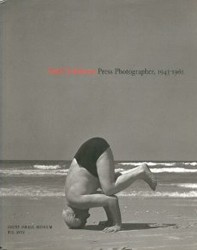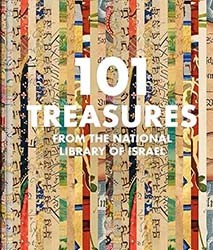The crafts of Israel are as varied as its faces; they draw on the skills and traditions of Jews who have come to Israel from all over the world, as well as the Palestinians, Druze, and Bedouins who have lived on the land for generations. According to author Lynn Holstein, what the craftspeople have in common is “a desire for innovation.” To illustrate this, in Artisans of Israel: Transcending Tradition, she highlights forty artisans from the Association of Israel’s Decorative Arts. The book features a brief biography of each artist as well as photographs of their work, and at the end includes the book’s text in Hebrew and Arabic.
Israel is notable for its technological breakthroughs, and Holstein draws a parallel between the country’s technological and artistic innovations. The growing craft movement is distinguished by unlikely materials, like concrete in jewelry-making, and new applications of traditional skills.In a short essay, Professor Ezri Tarazi of the Bezalel Academy of Arts and Sciences discusses how artists he calls “Craftsigners” use digital technology not only to market their work, but also to design and fabricate it.
Interesting as these observations are, the heart of this handsome large-format book lies in the photographs and stories of the artisans and their creations. Divided into Jewelry and Metalwork, Ceramics and Glass, Fiber and Leather, Paper, and Wood and Soap, some crafts are strikingly original while others are more informed by tradition. Each of the forty featured artists comes alive in the pages devoted to him or her. Tenat Auka, a ceramicist from Ethiopia, makes both secular and ritual objects. Her chanukiyah candles sit in sculptures of Ethiopian men and women celebrating the holiday. The Bedouin women of the Lakiya Negev Weaving Project weave wool from local sheep on homemade looms to make rugs (the profits from which have sponsored literacy, higher education, and leadership projects in this poor community). Hertz Auster, a master basket weaver, uses only material from date palms and olive trees to shape his unusual curved baskets. “Unusual” also describes Rami Tareef’s metal furniture, which includes an embroidery-inspired table top and metal-framed chairs.
In addition to depicting samples of the artists’ creations, the photographs capture the craftspeople at work, conveying the intensity of their dedication and the demands of their craft. For many of them, art has opened doors to creative and personal opportunity. It has also given the greater community a rich array of sophisticated craft. Above all, Artisans of Israel underlines how artisans have contributed to the vitality and cultural life of Israel.
Maron L. Waxman, retired editorial director, special projects, at the American Museum of Natural History, was also an editorial director at HarperCollins and Book-of-the-Month Club.




